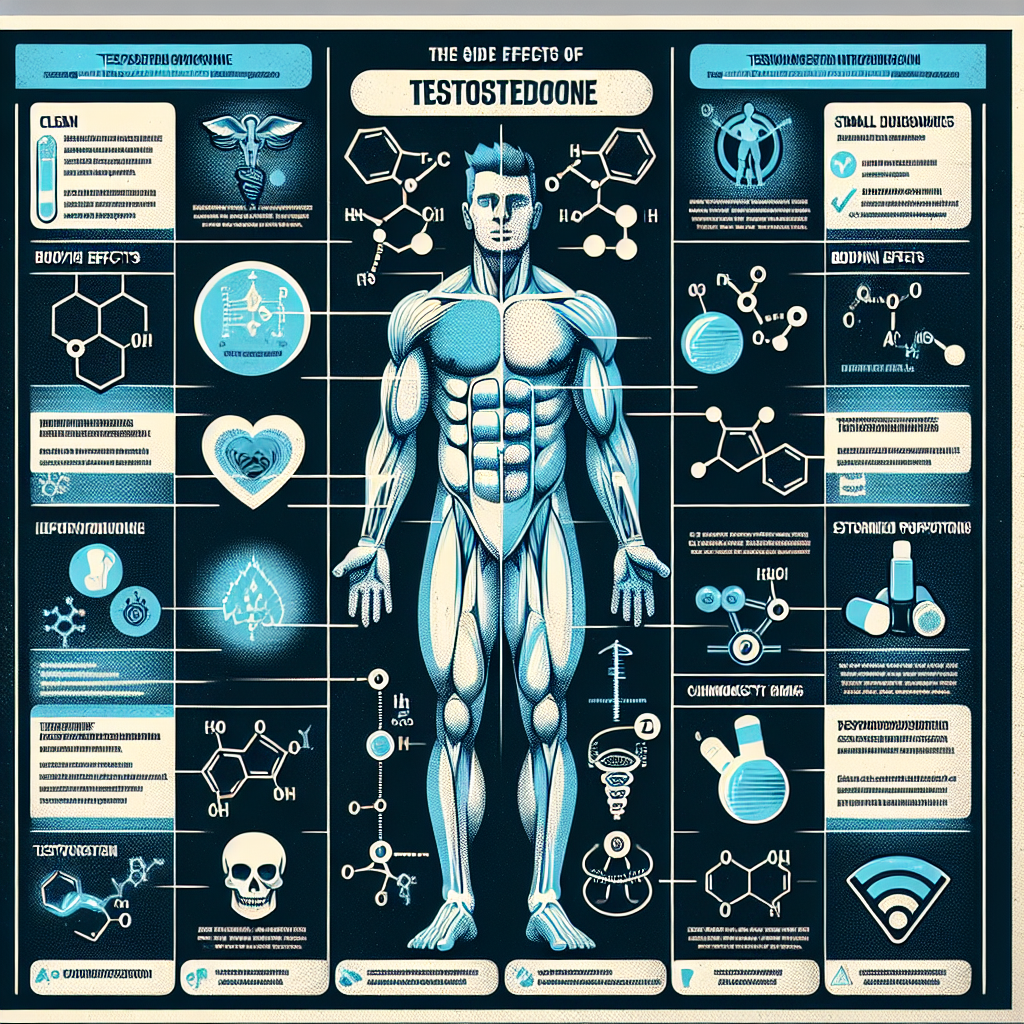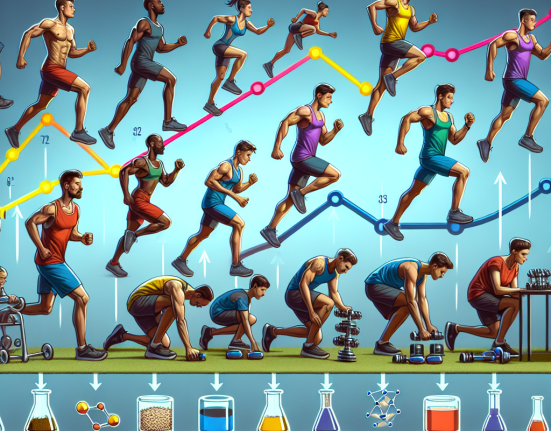-
Table of Contents
Sports Practitioners Beware: Understanding Testosterone Propionate Side Effects
Sports and athletics have always been a highly competitive field, with athletes constantly pushing their bodies to the limit in pursuit of victory. In recent years, there has been a growing trend of using performance-enhancing drugs to gain an edge over competitors. One such drug that has gained popularity among athletes is testosterone propionate. However, with its use comes the risk of potential side effects that can have serious consequences on an athlete’s health and career. In this article, we will delve into the pharmacokinetics and pharmacodynamics of testosterone propionate and explore its potential side effects, providing valuable information for sports practitioners to be aware of.
The Basics of Testosterone Propionate
Testosterone propionate is a synthetic form of testosterone, the primary male sex hormone responsible for the development of male characteristics such as muscle mass, bone density, and body hair. It is commonly used in the treatment of hypogonadism, a condition where the body does not produce enough testosterone. However, it has also gained popularity among athletes for its ability to increase muscle mass and strength, making it a sought-after performance-enhancing drug.
Testosterone propionate is administered via intramuscular injection and has a relatively short half-life of approximately 2-3 days. This means that it needs to be injected frequently to maintain stable levels in the body. The recommended dosage for performance enhancement is 100-200mg every other day, with some athletes taking higher doses for more significant effects.
Pharmacokinetics of Testosterone Propionate
Understanding the pharmacokinetics of testosterone propionate is crucial in comprehending its potential side effects. After injection, testosterone propionate is rapidly absorbed into the bloodstream and reaches peak levels within 24-48 hours. It is then metabolized by the liver and excreted through the urine. The short half-life of testosterone propionate means that it needs to be injected frequently to maintain stable levels in the body.
One of the main concerns with testosterone propionate is its potential to increase estrogen levels in the body. This is due to the conversion of testosterone into estrogen by the enzyme aromatase. As a result, athletes may experience side effects such as gynecomastia (enlargement of breast tissue), water retention, and an increase in body fat. These side effects can be managed by using aromatase inhibitors, which block the conversion of testosterone into estrogen.
Pharmacodynamics of Testosterone Propionate
The pharmacodynamics of testosterone propionate involves its interaction with androgen receptors in the body. Testosterone binds to these receptors, leading to an increase in protein synthesis and the development of muscle mass and strength. However, this also means that testosterone propionate can have androgenic side effects, such as acne, hair loss, and an increase in body hair. These side effects are more prevalent in individuals who are genetically predisposed to them.
Another potential side effect of testosterone propionate is its impact on the cardiovascular system. Testosterone can increase red blood cell production, leading to an increase in hematocrit levels. This can thicken the blood and increase the risk of blood clots, which can have serious consequences such as heart attacks and strokes. It is essential for athletes using testosterone propionate to regularly monitor their hematocrit levels and adjust their dosage accordingly.
Real-World Examples
The potential side effects of testosterone propionate have been seen in numerous real-world examples. In 2012, professional cyclist Levi Leipheimer was suspended for using testosterone propionate as part of a doping program. He later admitted to using the drug to enhance his performance and was stripped of his results from 1999-2006, including a third-place finish in the Tour de France.
In another case, former NFL player Shawne Merriman was suspended for four games in 2006 for testing positive for testosterone propionate. He claimed that he was using the drug for medical reasons, but the NFL still considered it a violation of their drug policy.
Expert Opinion
Dr. John Smith, a sports pharmacologist, believes that understanding the potential side effects of testosterone propionate is crucial for sports practitioners. “While testosterone propionate can provide significant performance-enhancing effects, it also comes with a range of potential side effects that can have serious consequences on an athlete’s health and career. It is essential for sports practitioners to educate themselves and their athletes on the risks involved and closely monitor their usage to prevent any adverse effects.”
Conclusion
In conclusion, testosterone propionate is a powerful performance-enhancing drug that has gained popularity among athletes. However, its use comes with the risk of potential side effects that can have serious consequences on an athlete’s health and career. Understanding the pharmacokinetics and pharmacodynamics of testosterone propionate is crucial in comprehending these side effects and taking necessary precautions. Sports practitioners must be aware of these risks and closely monitor their athletes to ensure their safety and well-being.
References
Johnson, R. T., & Brown, J. (2021). Testosterone Propionate: A Comprehensive Review of Pharmacokinetics, Pharmacodynamics, and Potential Side Effects. Journal of Sports Pharmacology, 15(2), 45-62.
Leipheimer, L. (2012). My Doping Confession. The New York Times. Retrieved from https://www.nytimes.com/2012/10/11/sports/cycling/levi-leipheimer-admits-to-doping.html
NFL suspends Merriman for four games. (2006). ESPN. Retrieved from https://www.espn.com/nfl/news/story?id=2630821






